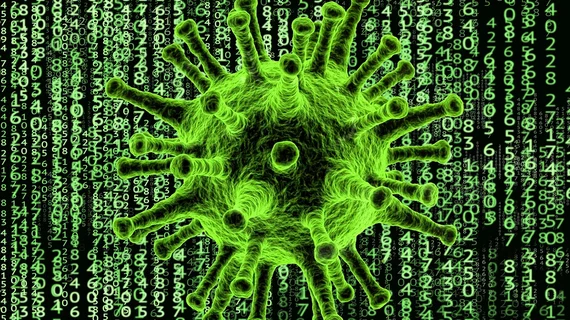Death of healthcare worker with mysterious altered mental status highlights imaging’s COVID-19 role
The recent death of a healthcare worker from COVID-19—which was preceded by a mysterious altered mental status—highlights imaging’s crucial role in managing patients with the virus.
That’s according to a new analysis in Radiology Case Reports, published this month. Experts from George Washington University Hospital and three other institutions detailed the case of a 50-year-old male admitted at an emergency department with unexplained central nervous system disfunction and cerebral edema.
The patient had experienced a few days of fatigue, severe headaches, nausea, vomiting and worsening lethargy. During the first physical exam, he did not follow commands, nor respond to painful stimulation, and his pupils were fixed. Initial chest x-ray and brain CT without contrast showed up normal, as did drug tests. But following confirmation of the disease with lab testing, a subsequent brain MRI was “remarkable,” displaying results that included brainstem compression and narrowing of the fourth ventricle.
“Our case highlights the importance of considering SARS-Cov-2 infection in the differential diagnosis for patients with unexplained central nervous system dysfunction and cerebral edema to prevent delayed diagnosis and render rapid treatment,” Reza Sirous, MD, with the Department of Radiology at GWUH, and colleagues wrote Aug. 15. “It also signifies the role of imaging in the management of COVID-19 patients with unexplained altered mental status.”
Following admission, clinicians started the man on IV Meropenem and Vancomycin. And after confirmation of the virus, they also administered hydroxychloroquine, which produced no significant response. In addition to magnetic resonance imaging, the team also performed MR angiography and venography two days after admission because of his unstable and worsening hemodynamic and neurologic status. Following continued rapid deterioration, the patient died from asystolic cardiac arrest two days after the MRI scan.
Sirous et al. hypothesized that these symptoms might be explained by a combo of severe cytokine-mediated immune response, development of vasculitis/vasculopathy and direct viral invasion into the brain parenchyma. Other recent research has highlighted the severe effects that the virus can have on the central nervous system via such mechanisms, the authors added.
Read the full investigation in Radiology Case Reports here.

